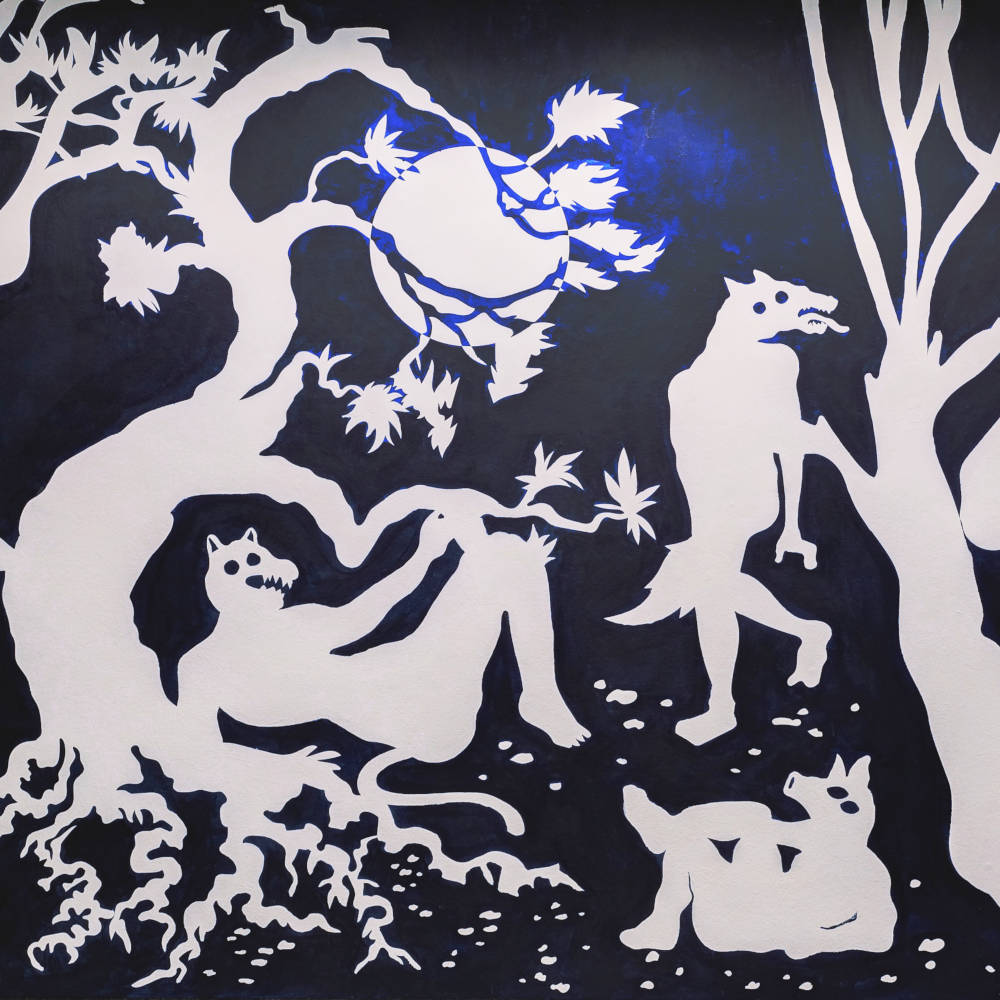

An artist's fascination with mythology and the human condition
Published: 6 Oct 2021
Time taken : ~10mins
In this interview, Muhammad Izdi elaborates and reflects on the ideas behind a series of murals that unfolds across the Esplanade Community Wall entitled The Menagerie Race. With a longstanding interest in mythology and folklore, Izdi also shares how these time-honoured stories continue to inform his practice and works.
Numerous inspirations contributed to the conceptualisation of The Menagerie Race, including paintings of Hieronymus Bosch, the Divine Comedy illustrations by Sandro Botticelli (c.1485), and an Indonesian horror comic entitled Siksa Kubur (c.1995). It wasn't until I attended a talk that I decided to put these ideas on paper. If I remember correctly, the talk was by Dr Timothy Barnard. He examined how the imagery of animals was used for imperial control in media like paintings and photographs and the ways this symbolism became integral to perceptions of Singapore. During the talk, Dr Barnard presented a print entitled A Menagerie Race At Singapore (1872), which he interpreted as how the colonial administrators treated the locals, portrayed as animals. I feel that A Menagerie Race At Singapore is relatable to the common theme I have in my works.
The theme of my work has remained the same since day one, and that is my observation of the human condition and the role we're playing in these polarised times and landscapes. The approach of adopting a myth or a legend derives from my interest in comic books which personally, are pretty much modern mythology.
I was studying Islamic eschatology when the idea of The Menagerie Race came about, and there was a description of a particular human characteristic nearing the end of times. I wanted to portray that and just like my past works, my research process was to go through existing stories, folktales and legends for inspiration. I came across The Conference of the Birds by Farid un-Din Attar and wanted to create a dark alternate version of it. While The Conference of the Birds focuses on the spiritual pilgrimage or journey that an individual undertakes to achieve unity with God, in contrast, The Menagerie Race centres on the self-destructive journey one takes to achieve worldly success.

Installation view of <i>The Menagerie Race</i>.
In terms of visuals, I wanted the work to stop the audience in their tracks and spur curiosity to find out about the narrative. The space of the Community Wall is ideal as it is where people have to walk through to reach their intended destination. When the audience is riding up the escalator, they will be greeted by the work at the end. I hope that they are compelled to pass through The Menagerie Race.
Similar to my past works, The Menagerie Race is also intended to be open-ended, leaving clues to allow the audience to interpret the artwork as to how they would like to perceive it.
It's a transformative phase. Initially, the representation of animals is often paired up with a black human figure (alluding to the legend of Orang Minyak) to show human dominance and ferocity over nature but as I explored further into different local folktales, the figures changed to anthropomorphic creatures (inspired by a theanthropic creature called Harimau Jadian) to represent human traits such as greed or lust. I feel that if I were to draw a human figure as it is, it loses its mystery. It becomes too literal and easy for an audience to understand and interpret. Also, we humans hate the truth, especially if it involves hearing something about what we need to improve about ourselves. Animal symbolism helps to 'tame' this reality. I see it as a strong visual communication of a theme or belief.

<i>The Brown Dabble</i>, 2017, Muhammad Izdi, mixed media installation. Image courtesy of the artist.

<i>Tales Don’t Tell Themselves</i>, 2018-20, Muhammad Izdi, mixed media installation. Image courtesy of the artist.
Myths are stories from different cultures that often feature larger-than-life individuals who teach us something about ourselves and our place in the world. The stories that come out of these mythologies are rich and varied. Many of them discuss the origins of the universe and the natural phenomena we see around us. Some offer insights into human nature and lend themselves as lessons in morality, while others seek to establish what binds humans together. Myths were never intended to be regarded as literal truths but as metaphorical ones. What interests me is the fundamental paradox here—why do we need tales of fantastical beings or creatures to make sense of our normal lives? Maybe myths are a necessary but temporary escape from reality, or our way of processing collective trauma.
Myths are not just about the stories but also the philosophy and messages behind them. Modernising and localising myths are ways of keeping them relevant in current and future times as societies and beliefs change. Whether that would make them relatable in the context of society today is something we have to decide.